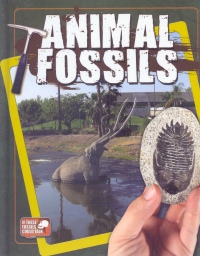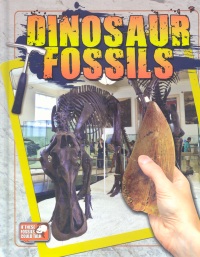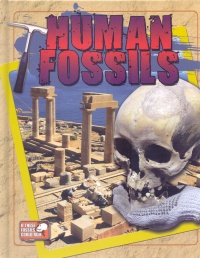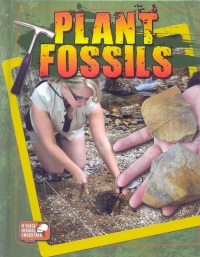| ________________
CM . . .
. Volume XX Number 22. . . .February 7, 2014
excerpt:
The “If These Fossils Could Talk” series looks at the fossil history of our world, covering the topics Animal Fossils, Dinosaur Fossils, Human Fossils, and Plant Fossils. Occasional examples from Canada are used, such as the “most famous coprolite was found in Saskatchewan, Canada” (Dinosaur Fossils). Other examples used are from different countries around the world. Author Natalie Hyde uses a similar format for each of the books. The books begin with an overview of the specific type of fossils and then examine different aspects of what we know and how we know it about each type of fossil. Each book ends with a simple but interesting activity suitable for young readers. The activities are engaging family activities which will prompt further discussion of the information in the books. For example, Plant Fossils, includes an activity to make “Amber Bug Brittle”, which claims to be good enough to eat. Fun learning. Interspersed throughout the books are short “Fact Files” and question text boxes. For example:
The books also include a table of contents, simple glossary, index, and a “Learning More” page listing book and website suggestions. Animal Fossils looks at animal fossils from microscopic insects to giant mammals like the Livyatan melvillei, a monster-sized whale which could grow up to almost 18 metres in length. A final topic, “Past and Present”, explains the scientific research on animal fossils examining how “animals adapted to climate change and how we might learn from their successes and failures”. Dinosaur Fossils explores the type of fossils most familiar to young readers. However, some of the information will make us rethink what we think we know about dinosaurs.
Human Fossils examines the field of paleoanthropology. Unfortunately, the author has chosen to define paleoanthropologists as “scientists who study primitive man.” The information in the book is very good, and the presentation is excellent, but the failure to use generic language such as ‘ancestors’ or ‘beings’ is unfortunate. Plant Fossils explains how paleobotanists locate and examine plant fossils in rocks and amber. A Fact File in the Living Fossils section tells how Russian scientists have “brought back to life a 32,000-year-old plant (Silene stenopylla) whose seeds were found frozen in Siberia.” Jurassic Park meets reality. The “If These Fossils Could Talk” series is filled with engaging, up-to-date information, supported by illustrative photographs and clear diagrams. The activities are very child friendly. If you need books on this topic, these are very good quality for the money. Highly Recommended. Suzanne Pierson is a retired teacher-librarian, currently instructing Librarianship courses at Queen’s University in Kingston, ON.
To comment
on this title or this review, send mail to cm@umanitoba.ca.
Copyright © the Manitoba Library Association. Reproduction for personal
use is permitted only if this copyright notice is maintained. Any
other reproduction is prohibited without permission.
NEXT REVIEW |
TABLE OF CONTENTS FOR THIS ISSUE
- February 7, 2014.
AUTHORS |
TITLES |
MEDIA REVIEWS |
PROFILES |
BACK ISSUES |
SEARCH |
CMARCHIVE |
HOME |



